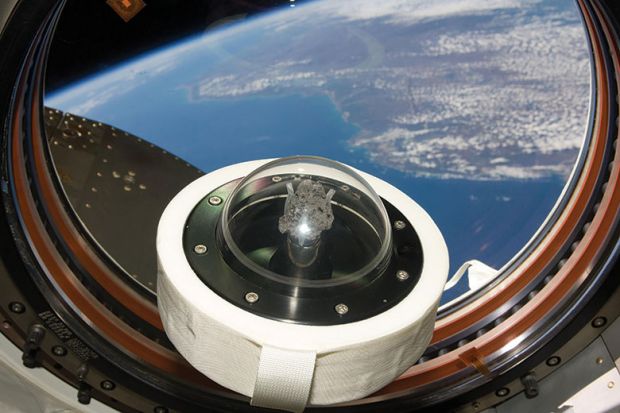Space and dinosaurs capture young imaginations and are sometimes the gateway drugs to science. “Space dinos” are what some of us mockingly – and jealously – call areas of science that gain sudden popularity among the general public, especially when the areas are not our own. In Dr Space Junk vs The Universe, Alice Gorman has somewhat managed to combine the two. Not dinosaurs per se, but rather archaeology in space.
Gorman is a space archaeologist, examining the artefacts left over from our interactions with space, whether on the Earth, the Moon, other planets or beyond. She also has an obsession with cable ties, but each to their own. Reading this book made me realise that a) I don’t actually know how archaeology works, although if you had asked me beforehand I would have said that I did and b) I don’t know any archaeologists. This now seems like a gap in my life.
I am not entirely sure I buy the premise of space archaeology. What more needs to be studied about objects for which we have schematics, photos, replicas and, oftentimes, video evidence? We know what these objects are, where they are and their purpose. We know how they reflect human culture because the space age is sufficiently recent that we have first-hand oral testimonies.
What I do enthusiastically buy, however, is the idea that we should consider the heritage value of these relics. “Heritage” is defined in this book as the things from the past that have significance in our present and that we want to preserve for our future. I am desperately jealous of a colleague who has in his office a rock that has been to the International Space Station. If offered a piece of Sputnik, or a heat tile from a space shuttle, I’d think all my Christmases had come at once. These things have no intrinsic value but their journey and their purpose make them unique. So I can see how consideration of the heritage value of these relics is important, particularly if we plan to tidy up our near space environment. Is it in our best interests to just sweep everything away?
Dr Space Junk vs The Universe also appealed to me because Gorman’s voice and experience are very Australian. As a fellow Antipodean of approximately the same age, they resonated with me, particularly since I grew up next to a Cold War military target in the Melbourne suburbs. Australia is very good at “cultural cringe”, a form of inferiority that leads us to imply that everything we do is just a little bit jokey, a little bit amateurish, slightly ham-fisted and, stereotypically, male – and that when we succeed it is almost by accident rather than design. Gorman’s book brings to our attention some of Australia’s contributions to the space age and to the junk that’s orbiting our planet or has been flung off into space. I can only agree that it’s worth taking a moment to consider how this “junk” may actually be a treasure trove of relics documenting everyone’s contribution to taking the first steps away from our planet.
Cait MacPhee is professor of biological physics at the University of Edinburgh.
Dr Space Junk vs The Universe: Archaeology and the Future
By Alice Gorman
MIT Press, 304pp, £22.50
ISBN 9780262043434
Published 22 October 2019




